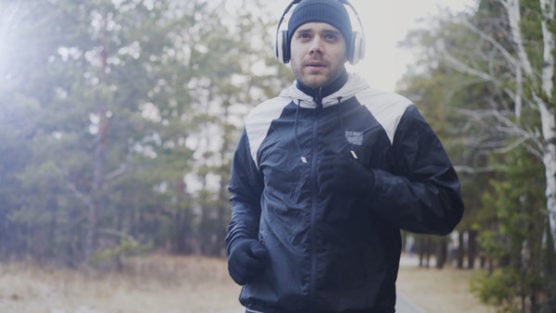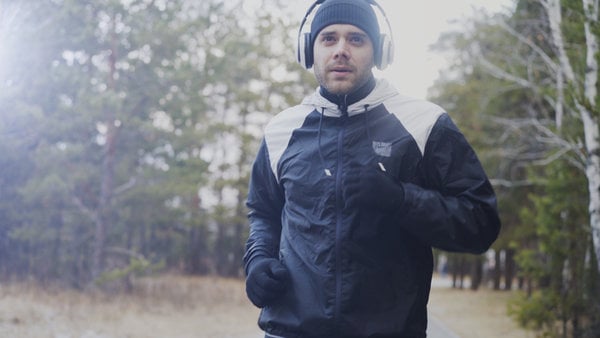
If you live on the East Coast, you know it’s been frigid lately. In 2018, the year we are finally in for a real winter? Normally, we are receiving this cold front in late January or February, when spring is right around the corner!
I went to college in Upstate New York, and one thing I didn’t miss was running in sub-zero temperatures. While we aren’t quite to that level of cold in New Jersey, we have had some single–digit days.
While it may be enjoyable, spring race times and goals aren’t achieved by taking the winter off: To run well in the spring, you must run during the winter.
For some, that means running on the treadmill, and that is fine! I’m a big fan of the treadmill on days the conditions are icy or dangerous. Sometimes, I just don’t want to run in the bitter cold!
Other days, I crave an outdoor run, even if it’s below zero! It’s important to remember when dressing for the winter, your body will heat up quickly. If you dress “too warmly,” you run the risk of sweating and having your sweat excessively cool you down.
Basic guide to running layers
- For women, a moisture wicking sports bra. A sports bra is closest to your skin, and if it holds moisture, you get cold, quickly.
- Base layer: A moisture-wicking tank top. This tighter top goes directly against the skin and provides an extra layer of warmth.
- Moisture-wicking/technical fabric long sleeve: Do you see a trend of moisture wicking? This is going to prevent sweat from clinging to you and making your colder.
- An isolated windbreaker/rain jacket. 30 degrees with no wind is very different than 30 degrees with gusting wind. A windbreaker is going to keep you much warmer. The same holds true for 30 degrees with a wintry mix. Believe me when I say my favorite cold weather purchase was a Gore-tex wind proof and water proof jacket. It’s pricey, but it has gotten me through 5 races where it poured rain, was windy, and 34 degrees.
- Occasionally for extra warmth I’ll throw a puffer vest on top to keep my core warmer.
- Long running tights. Fleece–lined apparel are a current favorite of my mine! If you don’t like tights, then running pants and joggers work too.
- Running gloves or mittens. Your hands will freeze quickly. There are so many options, so figure out what you like the best. Mittens are generally warmer than gloves, and bode well with people whose hands are the first thing to get cold.
- Headband or hat. Your ears and head get cold quickly, so keep that in mind and don’t forget about them.
- Finally: Merino wool socks! Ever since converting to wool socks, I won’t wear anything else outside in the cold. When my feet are toasty, my mind is happy.
The key to running outdoors is layering. While it is possible to run in any temperature, is it smart? That’s another question, but with enough layers it is possible. Remember, you are able to delayer when necessary.
How to dress for the cold
A general rule is to dress as if it is 10-20 degrees warmer than outside. Your body will heat up during a run and even in sub zero degrees, you sweat!
Always take into the account the wind chill because as previously mentioned, 30 degrees and windy is different than 30 degrees and a calm day. It is not a concrete number, but you should feel comfortable!
What do I do?
Keep in mind, these are my preferences, therefore it may not work for you! So find what works best for you.
- Below 10 degrees: Usually, I’m on a treadmill or I take a rest day.
- 0-20 degrees: base layer, long sleeve, wind breaker/jacket, puffer vest, fleece lined leggings, mittens, and hat.
- 20-30 degrees: base layer, long sleeve, wind breaker, jacket, mittens, fleece lined leggings and hat.
- 30-40 degrees: base layer, long sleeve, puffer vest (I sometimes delayer), gloves, capris/leggings, hat.
- 30-40 degrees (with wintry mix): Either treadmill, sorry this is the most miserable weather you can run in. OR: base layer, base layer, long sleeve, Gore-Tex, leggings, mittens, and hat.
- 40+ degrees: base layer, long sleeve, shorts, headband, and gloves.
Depending on your attitude, running in the winter can be fun.
As always, it’s important to take daily weather conditions into consideration: Running on ice is different and unsafe, versus running in the cold or powdered snow.
Keeping your sights on spring goals is a good way to stay motivated during the winter. Being outdoors in the cold, is about layering appropriately and smartly. Anyone can “make it” as long as they wear the right gear.
Hollie Sick is an avid runner who’s completed more than 40 half marathons. Read her blog, or follow her on Facebook.





